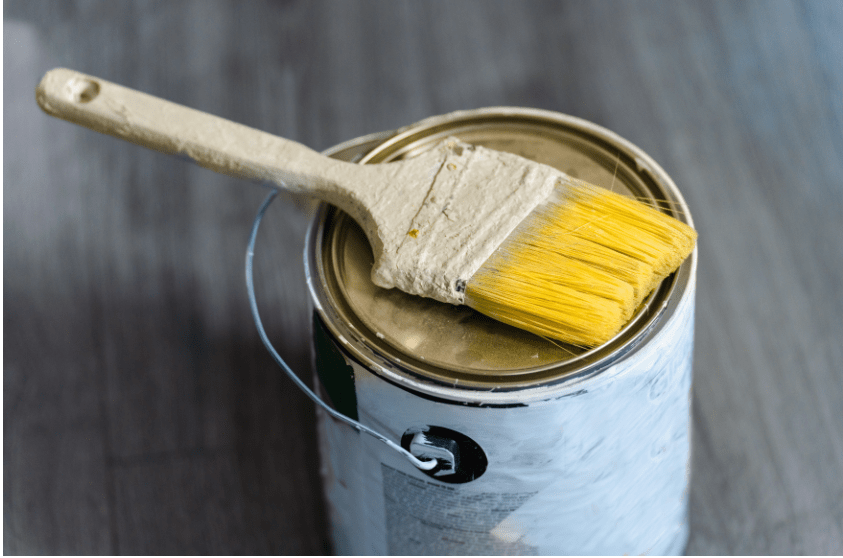
Table of Contents
Acrylic paint is one of the most popular paint options for artists, both amateur and professional, due to its versatility and top-notch performance. However, one common issue many acrylic painters face is the appearance of brush strokes in their finished paintings. So, if you face this issue, you may ask, how to get rid of brush strokes of acrylic paint?
Brush strokes can detract from the overall look of a painting and make it appear amateurish. However, with the right methods and tricks, you can create a smooth and even surface that will enhance the look of your painting. Some effective ways to eliminate brush strokes are sanding the surface, using thicker paint, working in thin layers, using a foam roller, or trying spray paints.
Getting rid of brush strokes from a painting can be challenging, but it can be done with a few techniques. In this article, I’ll go through some of the best tricks to get rid of brush strokes in acrylic paint. So, keep reading this article and complete your paintwork project with acrylic paint with smooth finishes.
Is it possible to get rid of brush strokes of acrylic paint?
Yes, it is possible to get rid of brush strokes when painting with acrylic paint. However, achieving a smooth, even finish without visible brush strokes can take some practice. Some of the steps you can take to minimize brush strokes include using a high-quality brush, thinning the paint, and working in thin layers. You can also use a light touch, keeping your brush damp, and consider using paint thinner to eliminate brush strokes.
How to get rid of brush strokes acrylic paint
Here are some tips to help you avoid brush strokes when painting with acrylics. By following these steps, you can improve your painting technique and get rid of unsightly brush strokes in your acrylic paintings.
Prepare The Surface Properly
Before applying paint, you should prepare your surface which you are going to paint. This preparation includes sanding and priming. These two steps are one of the most crucial steps for any paintwork project. While sanding can help you smooth the surface, priming lets the paint provides optimal and ultra-smooth finishes. So, you have to sand and prime your surface before applying paint.
Use Premium-quality brush
The type of brush you use can have a big impact on the appearance of brush strokes in your painting. Soft, synthetic brushes tend to leave fewer brush strokes than stiff, natural-hair brushes. If you are looking to create a smooth, even surface, consider using a flat brush or a synthetic brush with soft and smooth bristles.
Poorly quality paintbrushes that have been treated improperly rarely yield desirable high-grade results. Additionally, it’s important to choose the right size brush for the job. If you are painting a large area, you may want to opt for a larger brush, while a smaller brush may be better suited for more detailed work.
Work in thin layers
Applying paint in thin, even layers is one of the most effective ways to reduce brush strokes in acrylic paintings. When you paint in thin layers, the paint has a chance to level out, and the brush marks will be less noticeable. This technique is particularly useful for creating smooth, even backgrounds or for blending colors together.
Thin layers dry more quickly than thick ones, and it’s simpler to regulate the paint’s flow and outcomes. Although it requires more time, the ultimate result is more predictable. When working in thin layers, it’s important to let each layer dry completely before adding another.
Sand the surface
If you have already applied paint to your canvas and are unhappy with the appearance of brush strokes, you can try sanding the surface to smooth it out. Sandpaper may be a terrific tool for reducing brush strokes, even though it may seem intimidating to use on your paintwork or artwork.
YES! sanding can help to even out the surface of the paint and reduce the appearance of brush strokes. To sand your painting, use fine-grit sandpaper and be careful not to sand too hard, as this can damage the paint. Once you have sanded the surface to your satisfaction, you can apply a thin layer of varnish to protect the paint.
Ensure you have gentle sandpaper on hand. If you come across a stubborn streak that has produced an ugly bump or line, lightly push on it and sand it away. Make sure the paint is entirely dry before you begin sanding the surface.
Use Roller or Sprayer
Using a roller brush is another effective way to get rid of brush strokes of acrylic paint. You can use a roller to paint an extensive area like walls, doors, or floors. The diameter of the roller will vary according to the size of your surface you’ll be painting. Use proper amount of paint during roller painting so that it does not drop until the roller is completely filled.
You can also utilize a paint sprayer instead of a brush or roller to get rid of brush strokes. Although a sprayer will cost more than a pair of rollers or brushes, it will require less paint because it is diluted for spraying. Painting using a sprayer also nearly always results in an even, smooth finish.
Apply Paint is One Direction
Apply the paint to the surface after lightly loading your brush with it. Painting in a particular direction is necessary if you intend to get eliminate brush strokes. If you start brushing the brush horizontally, keep going with the same pattern.
On the other hand, if you begin vertically, carry on with this with the same pattern. All around your artwork, the identical pattern gets rid of brushstrokes. Therefore, you must complete the task using the same pattern. If you use a roller instead of a brush, you should also follow the same guidelines.
You should not also squeeze your brush too firmly. You are pushing too firmly if the brush strands begin to fan out. When painting, wet your paintbrush with water. Pre-softens the brushes can prevent the paint from drying out too quickly in them.
Consider fluid acrylics
Acrylic paints with a heavy texture are denser and hold brushstrokes. On the other hand, fluid acrylics don’t hold the brushstrokes as effectively since they are thinner. On your canvas, they apply more quickly and mix more readily.
The color depth won’t be harmed because fluid acrylics have the same quantity of paint as heavy denser paint. You might need to work more rapidly since some fluid acrylic formulas may dry a little bit quicker than the thick acrylic formula.
Mist the paint
Mist-spraying the paint with water is one technique that is used to help reduce the appearance of brush strokes when painting with acrylics. The idea behind this technique is that the mist’s added moisture can help smooth out the paint and reduce the visibility of brush marks.
You’ll need a fine mist spray bottle filled with water to use this technique. Lightly mist the paint’s surface as you work, careful not to add too much moisture. Adding enough moisture to help the paint glide smoothly without making it too wet is key.
It’s important to note that mist spraying the paint can affect the drying time. So, you’ll need to be patient and allow the paint to dry thoroughly before applying additional coats or sanding the surface. Additionally, over-mist-spraying the paint can cause the paint to run or drip, so be sure to use a light touch and build up the layers gradually.
Use Acrylic Spray Paint
This is the last but most effective and successful way to eliminate brush strokes in acrylic paint. Acrylic spray paints are super easy to use and also offer a superior smooth finish. However, one thing should mention that spray paints are relatively expensive compared to brush-on paints.
Wrap Up
In conclusion, getting rid of brush strokes in acrylic paint is possible with the right techniques and tools. It’s important to remember that getting rid of brush strokes requires patience and practice. By following effective tricks, you’ll soon be able to create beautiful and professional-looking acrylic paintings. Here I discussed some of the most effective tips and tricks on How to get rid of brush strokes acrylic paint. It may help you get rid of brush strokes in acrylic paint.
